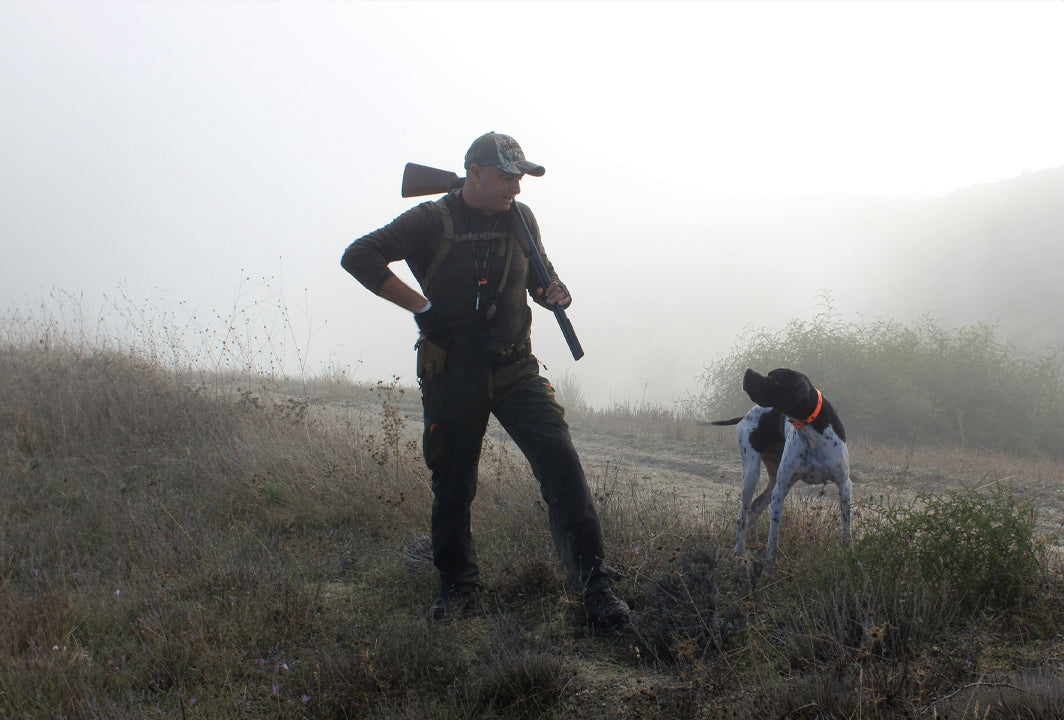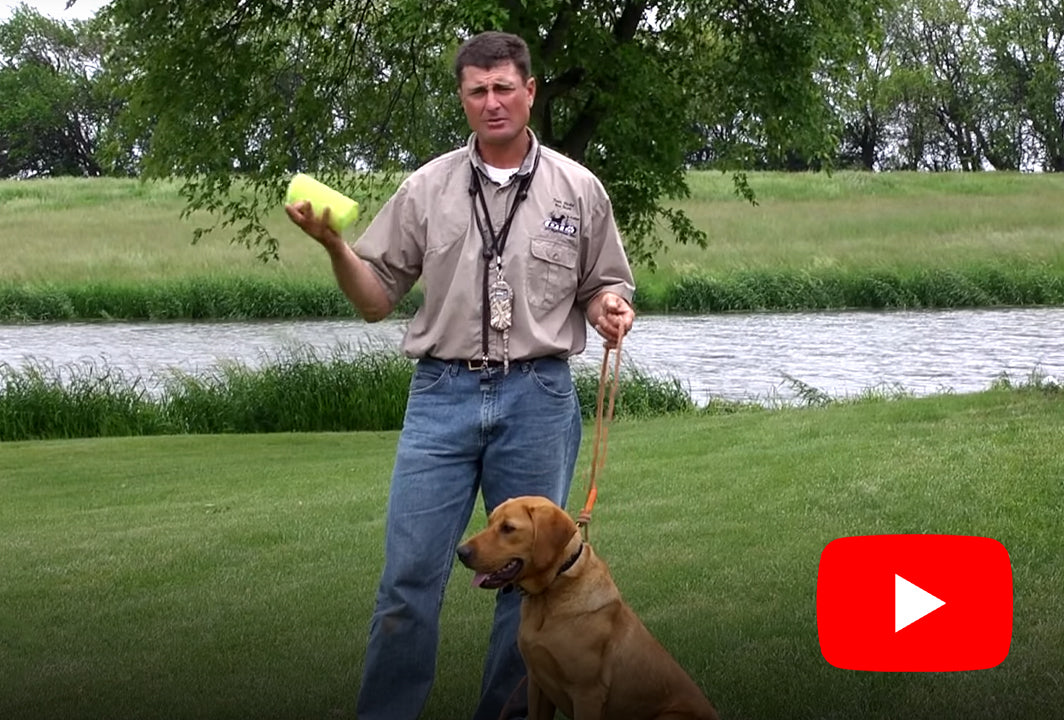How to Introduce and Condition Your Dog to Gunfire
Tips for when and at what age you should introduce gunfire to your hunting dog!

Imagine it’s a beautiful, early morning, and it’s a day you've been looking forward to for quite awhile. It’s the day you finally get to take your new dog hunting!
But as you aim your gun and fire a perfect shot, your dog suddenly goes berserk in response to the noise. Your perfect hunting day is ruined, and now you have to deal with the nightmare of trying to retrain your dog.
This is one of the biggest fears for hunters. You wanted a hunting dog to make your hunting experience better. The last thing you want is a hunting dog that is afraid of gunshots. That wouldn’t make for a very good hunting partner, would it?
That’s why it’s important to introduce gunfire to your dog in the right way! For certain training exercises, if you make a mistake with your training, you can typically go back and restart your training to fix your problems.
However, conditioning your dog to gunfire is not one of those training exercises that you can simply restart and fix the resulting mistakes. This is an exercise you want to get perfect on your first try.
Introducing Your Dog to Gunfire
Let’s go over some of the best methods to introduce and condition your dog to gunfire! This is important because the approach you take will determine whether your dog develops the skills perfectly suited for your hunting needs.
The best approach is to teach your dog a positive association between the noise produced by a gun and something else. Gunfire isn’t a natural noise for dogs, so it's very possible that your dog may be gun shy.
First of all, safety comes first. Make sure the training experience is safe and you’re using a safe firing method to begin. You want your dog to feel safe. If your dog feels threatened or like he is in danger, it can be a traumatic experience that’ll take a lot of time and hard work to mend.
A great way to create a positive reinforcement association with the gunshot is by associating it with a retrieve. Get your dog excited about the game of retrieving!
This will be a two-person training exercise. You’ll be with your dog, holding on to him with a long check cord, while your gunner is about 100 yards away. We recommend using the DT Systems' dummy launcher without a bumper on it for safe and optimal training purposes!
You can fire this like a blank gun, and when the shot goes off, you’ll toss the bumper towards the gun, and your dog will make an association between the gunfire noise and the retrieve.
Introduce it Slowly
You’ll want to introduce your dog slowly to this concept. To begin, you’ll just want to stick with a few shots at a long distance. This is because you don't want to allow the dog to hear a very loud noise right away. So, the first day is all about simply building the association!
Now, on the second and third days, you can keep getting closer and closer to the noise. And then, on the fourth day, you can advance even more rapidly. This gradually increases the volume and confidence of your dog!
The critical thing is you don't want to go all the way up to the gun the first couple days, even if it looks like your dog is making a positive association and there are no problems. Take your time with this; patience is key.
You could spread this out over a week or two. There's no need to rush. Just make sure that you are throwing the retrieve as soon as you hear the gunshot to build a positive relationship. And remember to get your dog excited about it! This is about to be a huge part of his life.
What Age Should You Introduce Your Dog to Gunfire?
If you’re wondering at what age to introduce your dog to gunfire, the answer isn’t as straightforward as you may hope. The truth is, it varies! Your dog can be anywhere between three months and a year old. It just depends on the dog.
The way you introduce him to gunfire is much more important than the age at which you introduce it. Determining if your dog is ready is highly dependent on his maturity, confidence, and ability to listen to you.
Notice how your dog reacts to the dead birds that you have been training with. Does he seem excited? Or is he more timid? If your dog is responding positively, as he should with the birds, then that can be an indicator that he is confident and ready to be slowly introduced to gunfire!
Another major thing to consider is whether or not your dog is obedient. If your dog ignores your commands and does his own thing, then that can be both dangerous and disastrous while training with gunfire.
If your dog still needs more training with listening to you, then it’s really important to work on that first. Obedience is the groundwork for every other training experience. You want your dog to show maturity through obedience and confidence before he’s ready for something as serious as gunfire.
Because remember, introducing your dog to gunfire is something that can’t really be retrained. If done too soon or if he has a negative experience, it’s extremely difficult to remedy.
So, the question with gunfire really is, “When is my dog ready?” rather than, “Is my dog old enough?” You know your dog better than anyone; you’ll know when he’s ready.
Slowly and carefully introduce it. Practice each day until your dog really becomes comfortable around it. And remember, get your dog excited during the training, and this will help build a positive association with it! It's crucial to be patient and take the process at your dog's pace.
You can shop DT Systems' dummy launcher here for a better and safer gunfire dog training experience for you and your dog!




